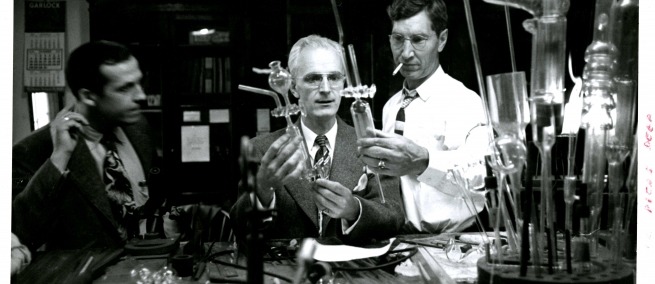
One of the first educational science TV programs for adults, and the first science TV show broadcast nationally in the U.S., the Johns Hopkins Science Review was a live, half-hour long, weekly program that included interviews, demonstrations, and behind-the-scenes glimpses of the daily work of scientists at the University. On air from 1948 to 1955, first on local Baltimore television, then on CBS, and lastly on WAAM-TV/DuMont, the show eventually broadcast to over 200 cities. Its creator, host, and writer Lynn Poole was a former dancer and arts administrator who joined Johns Hopkins as its first director of public relations two years before creating the show. Reviewing the Johns Hopkins Science Review in The New York Times in October 1950, Jack Gould wrote, "it bridges with a great deal of effectiveness the gap that separates the layman from the researchers and scientists in the laboratory" (66). What it had going for it above all else, the article concludes, was that it was interesting–"the most needed attraction of good education..." The show won two Peabody Awards in TV Education while it was on air.
At the time, television was relatively new in American living rooms, and the show made references to its novel display of scientific instruments and demonstrations on the medium. Poole became an aficionado on the subject, writing the 1950 book Science via Television.
A number of the Johns Hopkins Science Review episodes are now available online, following a 2003 grant for their preservation and digitization from the NEH. One in particular, titled "The Usefulness of Useless Knowledge," which was broadcast in February 1952, emphasizes the importance of basic laboratory research. Interviews about little-known but highly influential scientists reveal how inventions like a light bulb that could fit inside the body, the discovery of folic acid, and the study of congenital malformations led to practical advances in medical science that could not have been conceived of at the start of research. It is a good reminder that recent advances, such as CRISPR-Cas 9 gene editing technology and mRNA vaccines, are also the result of basic research. Lighthearted, entertaining science communication can be an effective way of making researchers and their research approachable and open to both questions and deeper understanding.